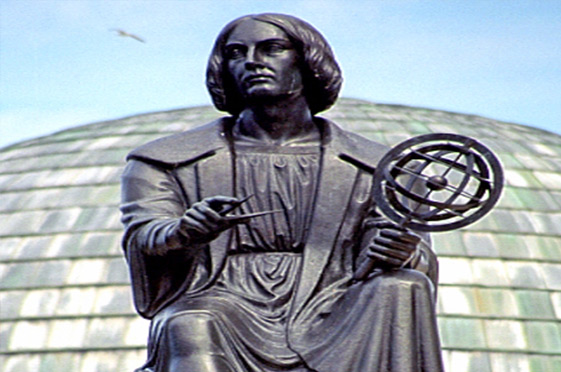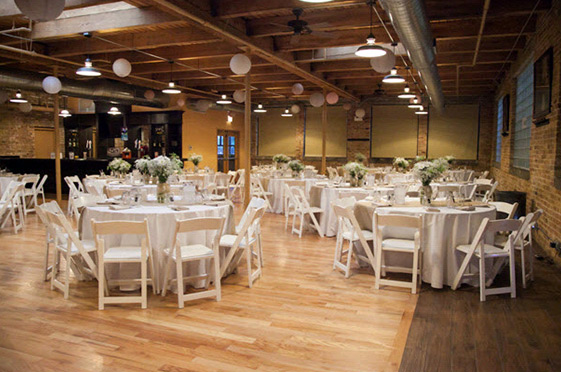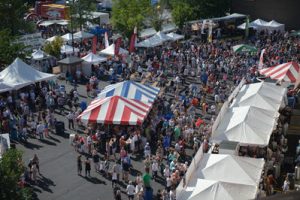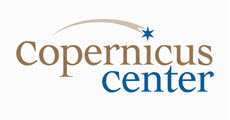About the Copernicus Center & Copernicus Foundation
Copernicus Foundation History
 In 1970, the City of Chicago turned to the Polish community with an offer to locate a statue of Nicolaus Copernicus, world-renowned Polish scientist and the Father of Modern Astronomy, at the entrance to the Adler Planetarium. The statue would be erected to commemorate the 500th anniversary of Copernicus’ birth. Copernicus is credited with “stopping the sun and starting the planets in motion in the minds of man.” This project raised over $300,000 from individuals, corporations, and other organizations, and the statue was dedicated in 1973, at no cost to the city. It sits proudly in front of the Adler Planetarium.
In 1970, the City of Chicago turned to the Polish community with an offer to locate a statue of Nicolaus Copernicus, world-renowned Polish scientist and the Father of Modern Astronomy, at the entrance to the Adler Planetarium. The statue would be erected to commemorate the 500th anniversary of Copernicus’ birth. Copernicus is credited with “stopping the sun and starting the planets in motion in the minds of man.” This project raised over $300,000 from individuals, corporations, and other organizations, and the statue was dedicated in 1973, at no cost to the city. It sits proudly in front of the Adler Planetarium.
The Copernicus Foundation was chartered as a non-profit organization in July 1971 to serve the metropolitan Chicago area as a major civic, cultural, educational, recreational and entertainment resource.
With seed money from the excess funds raised for the statue, a search began in 1977 for a permanent site to house a Polish cultural center in Chicago. In 1979, the foundation purchased the old Gateway cinema building located near Milwaukee and Lawrence avenues. The historic portion of the building housed the first movie theater in Chicago built exclusively for the “talkies.” The Copernicus Foundation chose to preserve the theater itself while remodeling around it, dividing the original 40-foot entry lobby and constructing three floors of office, meeting rooms and classroom space. The Copernicus Center was born. This first stage of remodeling was completed in 1981.
 The next remodeling stage was completed in 1984 and in 1985, “Solidarity Tower,” with its matching facade, was erected atop the building. The exterior of the building was modified to resemble the historic Royal Castle in Warsaw, Poland. The tower is a scale replica of the clock tower adorning the castle – it can be seen from the Kennedy Expressway by all that make their way between downtown Chicago and O’Hare airport.
The next remodeling stage was completed in 1984 and in 1985, “Solidarity Tower,” with its matching facade, was erected atop the building. The exterior of the building was modified to resemble the historic Royal Castle in Warsaw, Poland. The tower is a scale replica of the clock tower adorning the castle – it can be seen from the Kennedy Expressway by all that make their way between downtown Chicago and O’Hare airport.
Since then, a thrust stage was added with dressing rooms and up to date light and sound systems. The theater has been utilized for a wide variety of programs, not only Polish in nature, but a vast mix of uses by theatrical groups, schools, symphonies, modern rock concerts, beauty pageants, fashion shows, body building tournaments, international music stars, local musicians, and even the President of the United States. [/half]
Today, the former cinema house rarely shows movies but is used an average of 48 weeks per year, with the heaviest usage during the weekends. The programs have become more sophisticated in nature and serve many more people. The theater seats 1852 and has been named the Mitchell P Kobelinski Theater honoring one of the Center’s founding fathers who spearheaded the renovation and modernization of the theater.
Since 1980, the Copernicus Foundation annually fulfills its mission for education and entertainment in another way, by sponsoring the annual TASTE OF POLONIA FESTIVAL. During the festival there is a wide variety of live entertainment, food vendors serving the best of Polish cuisine, over 30 local and international bands playing a variety of genre, performances by ethnic dancers and musical groups, original arts and crafts, handiwork, imported items, as well as exhibits familiarizing festival goers with many aspects of Polish customs, culture, traditions and language. It has grown to be the largest Polish Festival in the country; visited by over 35,000 annually.
 In 2011 the Copernicus Center expanded by completing the renovation of the Annex which houses a brand new “loft type“ meeting or event space with hardwood floors, bare brick walls and wood beamed ceilings. In addition, the Annex houses the offices of several local Chambers of Commerce as well as many prominent Polish organizations.
In 2011 the Copernicus Center expanded by completing the renovation of the Annex which houses a brand new “loft type“ meeting or event space with hardwood floors, bare brick walls and wood beamed ceilings. In addition, the Annex houses the offices of several local Chambers of Commerce as well as many prominent Polish organizations.
The Center is now alive virtually every night with dance groups, classes and theatrical activities. Many options for venue rentals are now available to the public, in addition to the grounds and facilities used for community programs. Among annual activities sponsored by the Foundation are: art fairs, special exhibits, Farmer’s Markets, health fairs and seminars; free adult ESL (English as a Second Language) classes; citizenship classes; Annual Law Fair; various community seminars and meetings.
The long-range plans of the Foundation Board, always mindful of its mission to serve the greater Chicagoland area, ensure that these services will continue well into the 21st century. A boost to the vitality of Jefferson Park and the Northwest Chicago neighborhoods, the Copernicus Center, a concert, culture, and community center, is a monument to the Polish American community and its desire to retain its rich heritage while serving, and entertaining, the residents of Chicago at large.
Home to the Largest Polish Festival in the Country; visited by over 30,000 annually

The Copernicus Center is a celebrated community event venue, hosting public concerts, cultural and community events, private events, meetings and much more. It showcases the rich multi-ethnic heritage of metropolitan Chicago, particularly that of Polish-Americans; whose donations established the Center. As the Northwest side neighborhoods of Chicago became host to so many more cultures, so has the Center. We are a frequent host of international musicians and well-renowned performers from around the world. Every year, Copernicus Center puts on the highly-anticipated four-day Taste of Polonia Festival, boasting great music, events and Polish food. The Copernicus Center is supported by the Copernicus Foundation – a nonprofit organization chartered as a 501(c)3 in July 1971.
The Beginning of Our History
In 1970, City of Chicago turned to the Polish community with an offer to locate a statue of Nicolaus Copernicus, world-renowned Polish scientist and the Father of Modern Astronomy, at the entrance to the Adler Planetarium. The statue would be erected to commemorate the 500th anniversary of Copernicus’ birth. Copernicus is credited with “stopping the sun and starting the planets in motion in the minds of man.” This project raised over $300,000 from individuals, corporations, and other organizations, and the statue was dedicated in 1973, at no cost to the city. It sits proudly in front of the Adler Planetarium.
The Search Began
In 1977, the search began for a permanent site to house a Polish cultural center in Chicago. In 1979, the foundation purchased the old Gateway cinema building located near Milwaukee and Lawrence avenues. The historic portion of the building housed the first movie theater in Chicago built exclusively for the “talkies.” The Copernicus Foundation chose to preserve the theater itself while remodeling around it, dividing the original 40-foot entry lobby and constructing three floors of office, meeting rooms and classroom space for the new Copernicus Center. This first stage was completed in 1981.
With seed money from the excess funds raised for the statue, the Copernicus Foundation was chartered as a not-for-profit organization in July 1971 to serve the metropolitan Chicago area as a major civic, cultural, educational, recreational and entertainment resource. The search began for a permanent site to house a Polish cultural center in Chicago.


